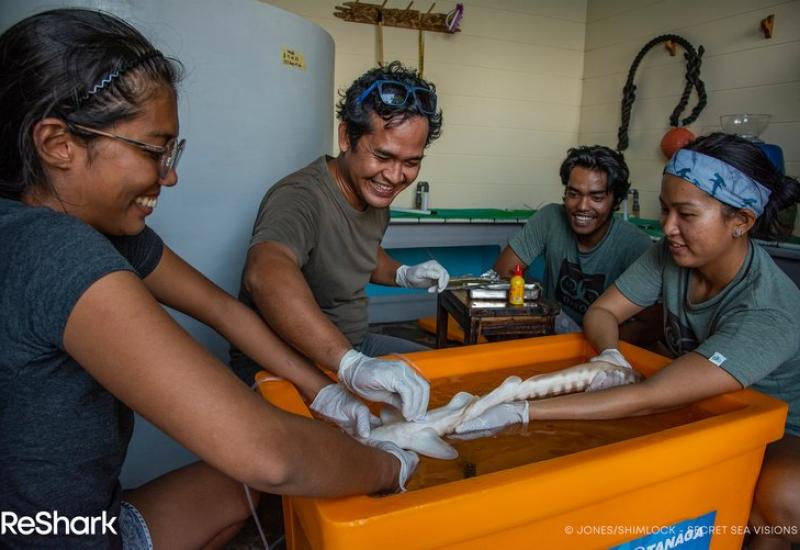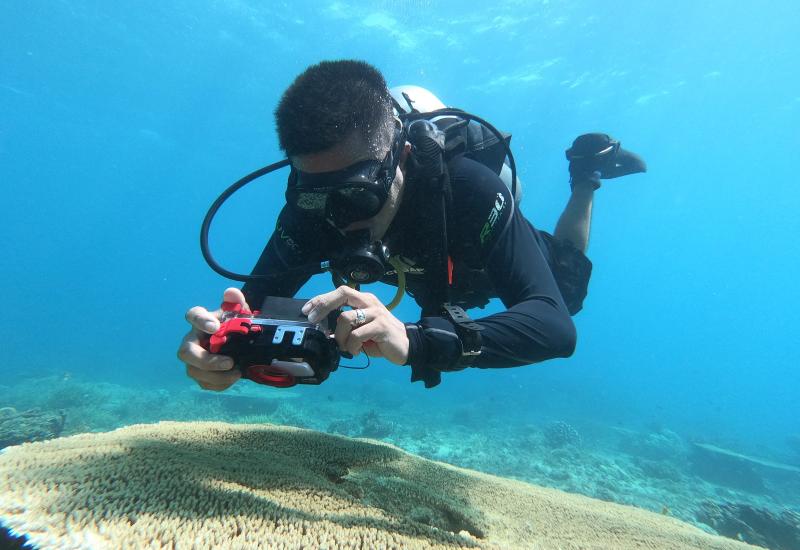Divers Cull the Tide of Urchins to Help Save Kelp
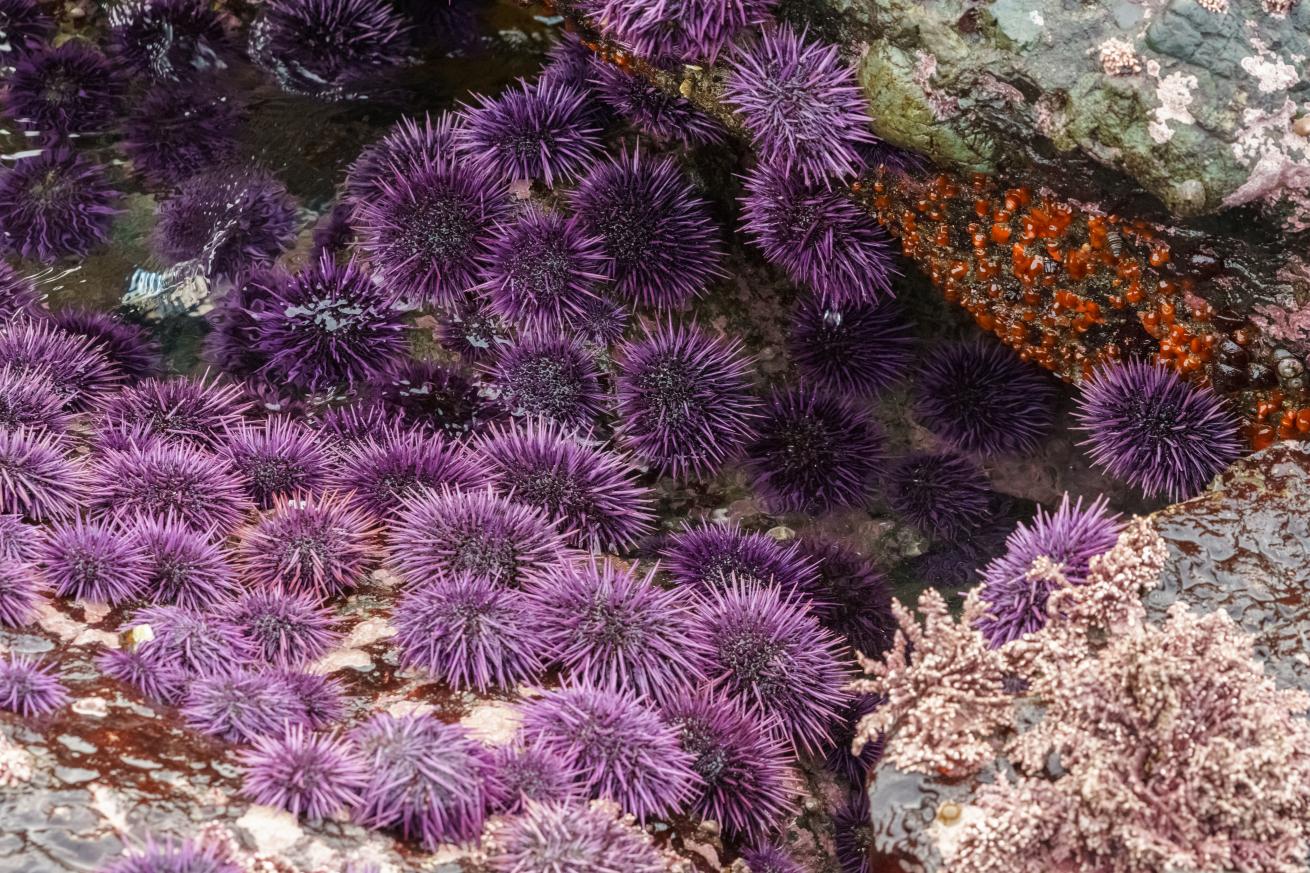
Shutterstock.com/RelentlessImagesDivers work to cull purple sea urchins that are decimating kelp forests off the coast of California.
I bring my hammer down swiftly, leaving a gaping hole in the center of the urchin’s test. But I don’t stop there. Turning the hammer to its broad side, I tap down definitively several more times, splintering the skeleton into uncountable violet pieces. Bits of bright orange digested algae spew into the water. At first, I think these neon projectiles are urchin gonads—a Japanese delicacy called uni—but these urchins are far too starved to have any uni inside them. Instead, the emaciated grazers roam the reef, searching for any strand of kelp that has grown inside of this research plot. They won’t get far, however, not with our crew of hammer-wielding divers dedicated to protecting this delicate kelp forest from the urchins’ voracious appetites.
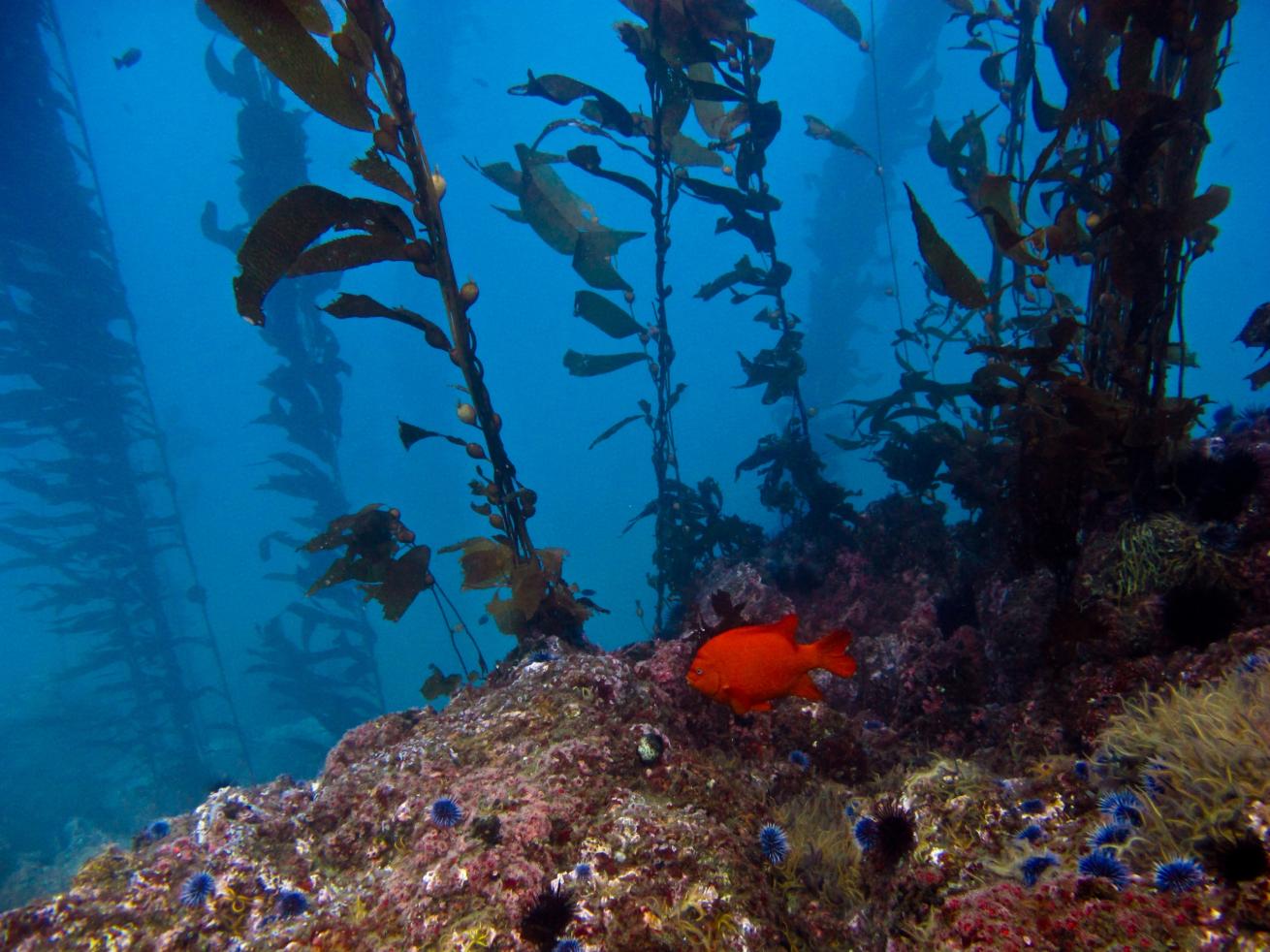
Shutterstock.com/BrandonBCalifornia, and specifically Monterey Bay, is known for it's beautiful kelp forests.
Rapid Changes
Rewind to 2013, when I first began diving in Monterey. I had no idea how much the ecosystem was about to change before my eyes or how rapidly. Back then, the kelp was thick. I had to elbow my way through the floating mats of seaweed to reach certain dive sites. Now, kelp patches have thinned out dramatically because the urchin population has gotten out of control.
A marine heatwave from 2014 to 2016 combined with sea star wasting disease that killed off the urchins’ main predator was a recipe for disaster. The native population of urchins grew unchecked, and they devoured the kelp.
You’d think that without their source of food (kelp), the urchins would die off, and the ecosystem would return to a natural balance. Not so, Scuba Diving’s May 2022 Sea Hero Keith Rootsaert tells me. “Purple urchins can live without eating for years in a hibernation state,” he says. Rootsaert estimates that before the heatwave, southern Monterey Bay boasted 487 acres of kelp. As of last year, he says that number has dropped to just 58 acres. In response, Rootsaert founded the Giant Giant Kelp Restoration (G2KR) project in 2018 to combat this rapid decline of kelp forests. The project aims to restore the kelp by culling urchins inside a 2.5-acre research plot called Tankers Reef, located about 300 yards off Del Monte beach in Monterey.
“The population of urchins doubles every four years,” Rootsaert says. This problem isn’t going away on its own. Since 2018, 215 certified Kelp Restoration divers have helped G2KR remove 637,000 urchins from Tankers Reef. Today, I’m out here to continue what they started by taking the PADI Kelp Restoration Diver Specialty course myself.
Related Reading: Step Inside The World’s First Sunflower Sea Star Nursery
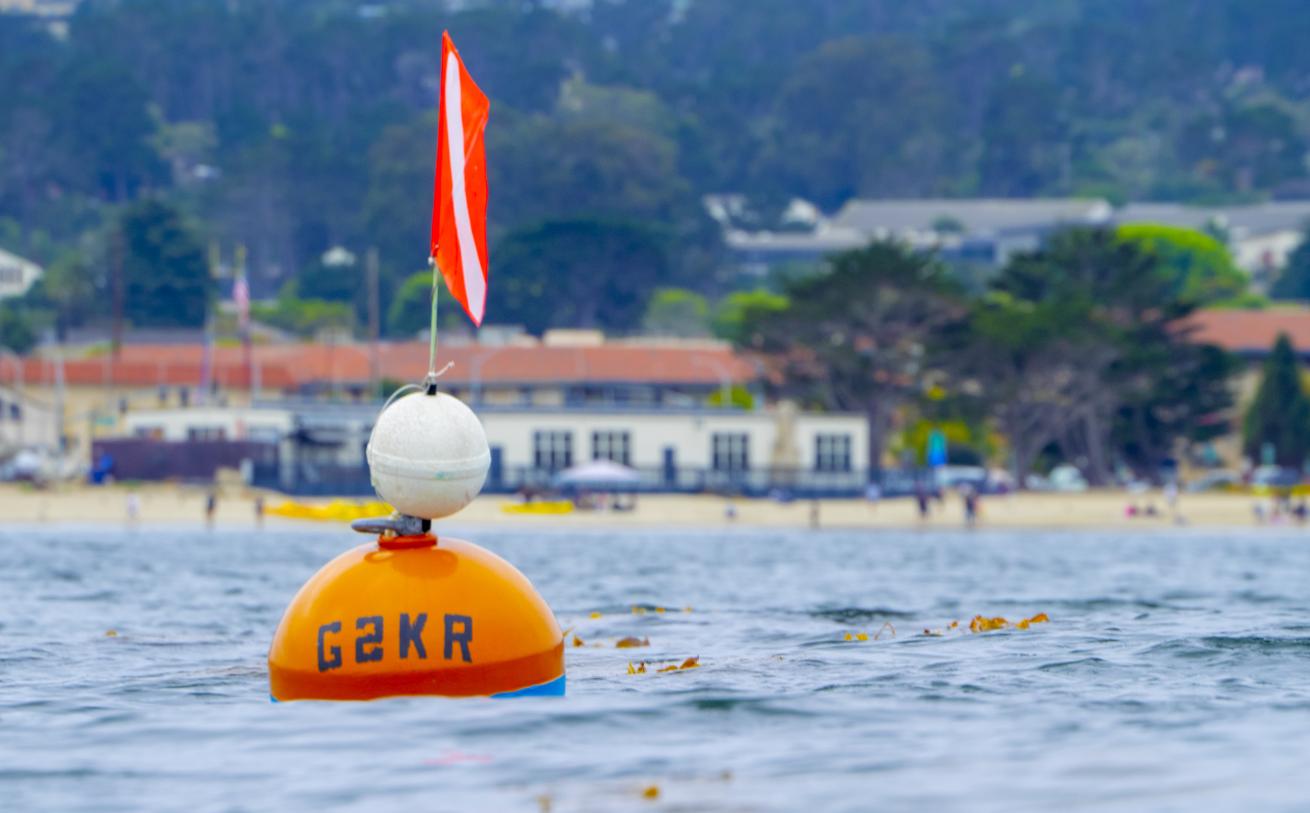
Courtesy, Dan SchwartzA Giant Giant Kelp Restoration (G2KR) buoy marks one point of the Tankers Reef research plot where divers are culling urchins below.
Armed and Dangerous
We pull up to a series of unassuming buoys that mark the edges of the reef. Within the bounds of the research plot kelp floats at the surface in amber thickets. This is where the G2KR team has been aggressively beating back the tide of urchins weekly, allowing the delicate kelp spores to settle and the baby kelp to grow in peace. Where there’s kelp, there’s life: An entire ecosystem depends on this macroalgae, and its presence provides hundreds of species with a home. Surrounding the plot is flat, blue water where urchins have been left to their own devices.
Related Reading: World’s Largest Kelp Map Launches to Guide Restoration Efforts
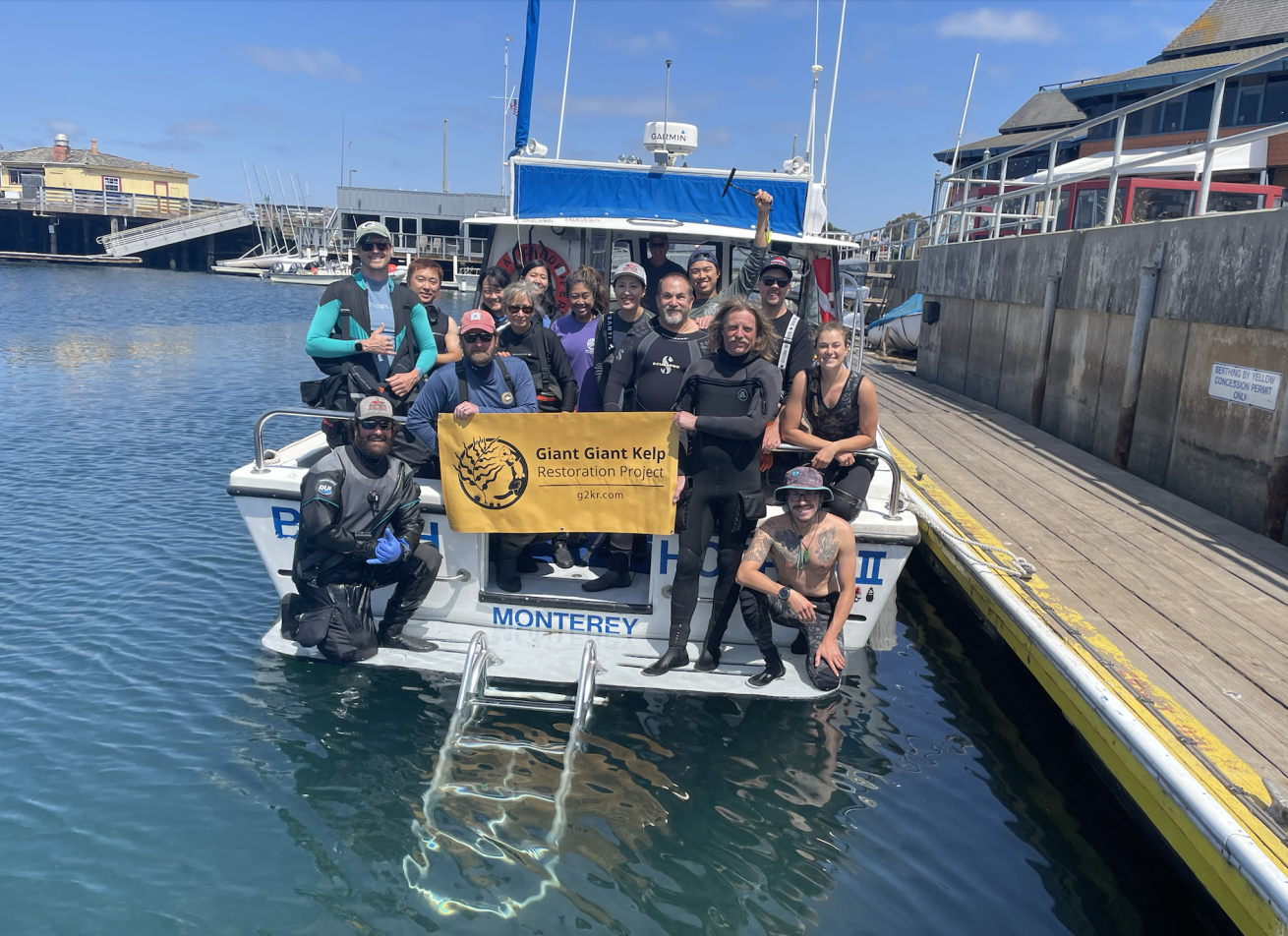
Courtesy, Brian TaniguchiKeith Rootsaert (row 2, second from right) and author Ariella Simke (row 2, far right) gather with the group of G2KR volunteer divers and G2KR Kelp Restoration instructors on the boat in Monterey before the dive.
It's Hammer Time
On the boat, Rootsaert pulls apart an urchin to show us its anatomy as instructor Will Mariano talks us through proper techniques. “You want to hit them as if they’re sitting on top of glass,” he says. “Don’t damage any of the substrate under them.” Then, each buddy team is assigned a lane to work within for the duration of the dive.
We head for the down line that leads to the reef. Underwater, we fin along a transect marked with letters for each row until we find our assignment: the 5-meter-wide lane “B”. I squint through the snot-green water, scanning for the drysuits of my buddies. The 10-foot visibility has been reduced to 5 feet, with all the particulate matter being churned up by hammers and fins, and it’s impossible to see what is going on. When I find my buddies, we remain at arms-length from each other and get to work trying the different hammering techniques. I find urchins hiding out under a shale ledge and go in for the kill. It’s challenging enough to stay in buddy contact while also paying attention to where you are hammering, but on top of that, each of us is counting. With each 10 urchins I cull, I make a tally on my slate. By the end of the dive, I have culled 72 urchins. We leave the reef feeling accomplished. Because of us, the kelp has another day to grow and a better chance of survival. But this is a long-term effort, and its success depends on policy change.
Related Reading: Sea Forests of the South: Searching for Kelp in the Southern Ocean
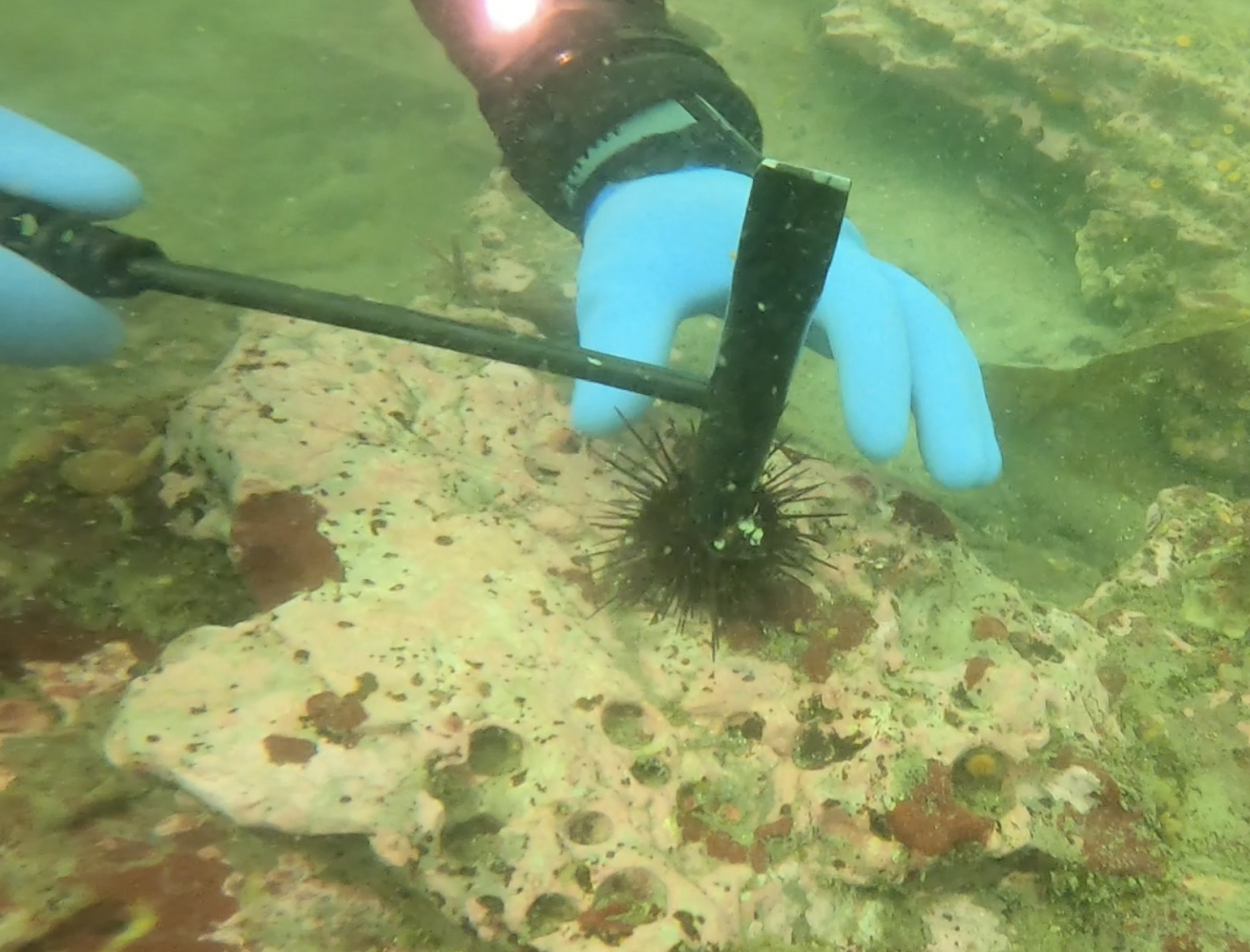
Courtesy, Brian DeRubesPADI Kelp Restoration instructor Dane Durand demonstrates proper urchin culling methods to eliminate the possibility of bycatch.
What's Next?
While Rootsaert has managed to get an overwhelming majority of California divers on board with the mission, his non-profit faces plenty of regulatory red tape because they are trying to restore kelp within marine protected areas (MPAs). “The California Department of Fish and Wildlife and the California Fish and Game Commission think that this will naturally sort itself out and find a new balance, and they’re right, but the new balance will be death,” Rootsaert says. Because of the urchins’ ability to persist without food, once a reef becomes an urchin barren—an area with a high density of urchins where few other life forms exist—it will stay in this state for decades. Rootsaert tells me that G2KR is struggling to get a policy written that says kelp restoration is legal in the MPAs.
“They think that we’re a vigilante horde that will kill everything with hammers, and that hasn’t been the case because we have a training program that teaches people how to cull without creating bycatch,” he says, referring to the care the volunteer divers take not to smash any wildlife that may be near or under the targeted urchins on the reef. Rootsaert has been fighting policymakers for years, and it is starting to take its toll. “There’s definitely a fatigue. I don’t want to have a political campaign, but I’m being pushed that way,” he says.
The issues facing our ocean can feel too big to make a dent, but as we pull away from Tankers Reef, I look back at that stronghold of kelp slathered across the surface and feel a tiny bit lighter. The mini underwater forest is a testament to the difference divers can make in protecting the underwater places we love. “We’re trying to create ocean stewardship,” Rootsaert says, “By doing our part we can inspire more people to do theirs.”

